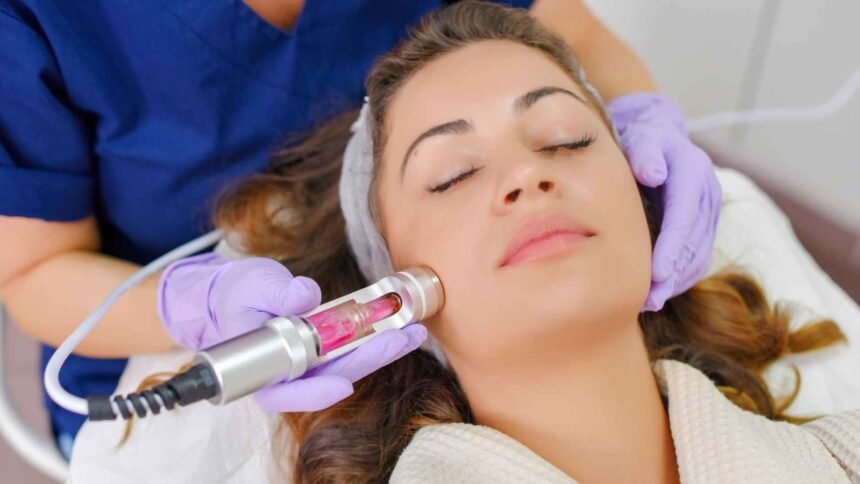As we enter 2025, the beauty and anti-aging technology sector is profoundly transforming. Gone are the days when the industry solely focused on combating the visible signs of aging. Today, it embraces a more holistic, preventive, and inclusive approach, celebrating natural aging while prioritizing skin health and well-being. This shift is driven by technological advancements, changing consumer behaviors, and a growing emphasis on sustainability and personalization.
The Shift from Anti-Aging to Age Management
The beauty industry is moving away from the traditional “anti-aging” narrative, which often perpetuated negative stereotypes and unrealistic expectations. Instead, it is embracing “age management” or “embrace midlife” trends, focusing on positive, holistic, and preventive approaches to aging. According to experts from L’Oréal and Unilever, this shift is essential for fostering inclusivity and empowering consumers, particularly women over 40, who represent a significant and influential market segment with substantial purchasing power.
Research from WGSN indicates that concerns about aging begin as early as age 29, with fears of wrinkles, dark spots, and even social invisibility by age 40. However, the industry is responding by celebrating natural aging and offering solutions that enhance skin health rather than fighting age. Brands are now emphasizing ingredients like plant-derived Feminage™, which targets glycation—a key factor in skin aging—and Phytessence™ French Rose EC, which moisturizes and protects against premature aging. This shift reflects a broader cultural change toward viewing aging as a natural, beautiful process rather than a problem to be solved.
Market Trends: A Trillion-Dollar Industry on the Rise
The global beauty industry is thriving, with a value growth of 7.3% year-over-year, reaching a staggering $1 trillion market, according to NielsenIQ. While mature markets like North America (+7.8%) and Western Europe (+7.7%) continue to perform strongly, regions like Latin America (+19.1%) and the Africa-Middle East (+27.1%) are experiencing explosive growth. This expansion is fueled by several key trends, as outlined in the table below:
| Trend | Details | Statistics |
| Social Commerce | Purchases on platforms like TikTok and Instagram drive beauty sales. | Nearly 50% of social media users buy, spending $800 yearly on average. |
| Men’s Beauty Products | Growing demand for male grooming products, fueled by social media. | Market to reach $110 billion by 2030; “men skincare routine” searches up 857%. |
| At-Home Beauty Treatments | Rise in at-home devices for convenience and personalization. | Market to hit $25 billion by 2027. |
| Sustainability | Demand for natural, organic, and eco-friendly products. | Natural cosmetics market to reach $59 billion by 2031; 65% prioritize green brands. |
Social commerce is particularly impactful, with brands like Truly Beauty leveraging TikTok to gain over 1 million followers between 2020 and 2021, with videos receiving over 81 million likes. The men’s beauty market is also surging, driven by social media trends and a growing acceptance of male grooming routines.
Technological Innovations: Beauty-Tech Takes Center Stage
Technology is revolutionizing the beauty industry, offering innovative solutions that blend efficacy with convenience. Beauty-tech devices are at the forefront, providing at-home treatments that rival professional services. Here are some of the most notable trends:
- LED Light Therapy: Devices like FOREO’s FAQ™ 200 LED mask range and UFO™ 3 use LED light therapy to address various skin concerns, from reducing wrinkles to improving hydration. These devices are wearable, hands-free, and customizable, catering to busy urban consumers.
- Microcurrent Technology: FOREO’s BEAR™ 2 microcurrent facial toning device uses microcurrents to tone facial muscles, improving firmness and elasticity in just one week. This “face workout” trend reflects a growing interest in non-invasive, at-home alternatives to surgical procedures.
- Biotech Innovations: Biotechnology is transforming ingredient development, with companies like Unilever and L’Oréal partnering with firms like Geno to create sustainable surfactants through fermentation processes. These ingredients serve as eco-friendly alternatives to palm oil and fossil fuels, aligning with the industry’s sustainability goals.
- AI and AR for Personalization: AI-powered tools like Revieve’s skin analysis platform are gaining traction, offering personalized skincare recommendations based on individual skin needs. Search volume for “AI skin analysis” has surged by 201.5% in the past 12 months, highlighting consumer demand for tailored solutions.
- Peptide Power: Ingredients like peptides are becoming central to anti-aging formulations. Products like FOREO’s SUPERCHARGED™ Triple-Action Firming Serum use peptides to repair cells, boost collagen, and provide antioxidative benefits, addressing multiple signs of aging.
Consumer Behavior: Personalization, Sustainability, and Convenience
Consumers in 2025 are more discerning than ever, demanding products that align with their values and lifestyles. Key consumer trends include:
- Hyper-Personalization: With 71% of consumers expecting personalized experiences, brands are using AI and AR to offer customized product recommendations. For example, Prose Hair has seen a 208% increase in search volume over five years, thanks to its personalized hair care solutions.
- Natural and Organic Ingredients: There is a growing preference for clean, sustainable products. Over 68% of consumers look for “clean” labels, and 59% are influenced by “natural and organic” claims. Brands are responding with minimalist, plant-based formulations, such as Croda Beauty’s Naturally Boosted Blurring Stick, which uses sustainable ingredients like Syncrowax™ SB1.
- At-Home Convenience: The COVID-19 pandemic has accelerated the trend toward at-home beauty solutions. FOREO’s FAQ™ 301 LED Hair Strengthening Scalp Massager combines scalp massage with red LED therapy to promote hair growth, exemplifying this trend.
- Wellness Integration: Beauty is increasingly intertwined with wellness. Products like colostrum and collagen supplements are gaining popularity for their gut health and beauty benefits, enhancing skin elasticity and collagen production, as noted by New Beauty.
Case Studies: Real-World Innovations
To illustrate these trends, here are three case studies of innovative products and strategies:
- FOREO’s FAQ™ 301: This device combines red LED light therapy with a scalp massage to promote hair growth and strengthen hair. It has shown visible results in just two weeks, highlighting the effectiveness of beauty-tech in addressing specific concerns like hair loss.
- Revieve’s AI Skin Analysis: Revieve offers an AI-powered skin analysis tool that provides personalized skincare recommendations based on individual skin needs. This technology has seen a 201.5% increase in search volume over the past 12 months, indicating growing consumer interest in personalized beauty solutions.
- Truly Beauty on TikTok: Truly Beauty, a direct-to-consumer skincare brand, has leveraged TikTok to reach a younger audience, gaining over 1 million followers between 2020 and 2021. Their videos receive over 81 million likes, showcasing the power of social media in driving beauty product sales.
Key Players: Leading the Charge in Innovation
Several brands and companies are at the forefront of the beauty and anti-aging technology revolution:
- FOREO and FAQ™ Swiss: These brands are pioneers in beauty-tech, offering devices like the UFO™ 3 for facial hydration and the FAQ™ 301 for hair strengthening. Their focus on results-driven, time-saving solutions resonates with modern consumers.
- Unilever and L’Oréal: These giants are investing heavily in biotech, partnering with firms like Geno to develop sustainable ingredients. Their commitment to innovation and sustainability sets the standard for the industry.
- Evolved By Nature: This biotech startup is disrupting the market with its Activated Silk-33B technology, which enhances skin health while reducing environmental impact. The company raised $190 million in funding in 2022, reflecting investor confidence in biotech’s potential.
- Truly Beauty: This direct-to-consumer brand has harnessed the power of TikTok to reach younger audiences, demonstrating the effectiveness of social commerce in beauty.
Regulatory and Ethical Considerations
As the industry embraces new technologies and ingredients, regulatory and ethical considerations are becoming increasingly important. Consumers are demanding transparency about product ingredients, safety, and environmental impact. Brands are responding by adopting cleaner formulations, transparent labeling, and sustainable practices. However, the use of advanced technologies like AI and biotech raises questions about data privacy, ingredient safety, and long-term efficacy. Regulatory bodies must keep pace with these innovations to ensure consumer protection while fostering innovation.






